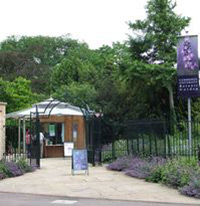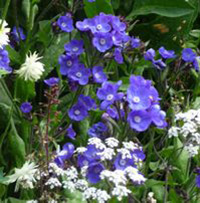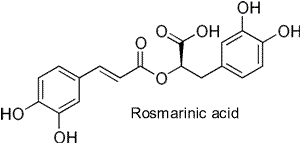May started with the announcement of this year's winners of the David Miller Travel Bursary Award. They were:
Antje Fiebig from the University of Lancaster who is studying the feedback regulation of irrigation via soil moisture monitoring and its implication on plant growth and physiology. She plans to expand her knowledge at the ISHS Congress in Brisbane, 17-22 August.
Sebastian Eves-van den Akker from the University of Leeds who is studying how highly specialised endo-parasites can have such broad host ranges. He plans to present his work at the International Congress on Molecular Plant-Microbe Interactions in Rhodes, Greece, 6-10 July.
Both winners will be presenting details of the research and the results of their travels at our Annual General Meeting on 19 September.
This year there was no Fascination of Plants Day. Not to be outdone, Cambridge University Botanic Garden held a Festival of Plants and Margaret Waddy went along. She reports on the event below.
Meanwhile as 'engaging with research' has been pushed to the fore in the farming community it has prompted me to write a short piece about the 60th anniversary of the West Sussex Tomato Working Party. A finer example of working with research would be hard to find.
UK companies keen to export still have the opportunity to receive grants to attend Greentech, the major horticultural technology exhibition to be held in Amsterdam between 10 - 12 Jun. Contact CHA for details.
Peter Grimbly
Editor
Cambridge University Botanic Gardens (CUBG)
Engaging with Research
Plant of the Month
News from our Associates
Horticulture Industry News
Events Calendar
Horticulture Group contact details
Related Links
Cambridge University Botanic Gardens (CUBG) - Festival of Plants, 17 May
What a difference a year makes! In mid-May 2013, the lilacs and other Spring shrubs were scarcely in flower. This year (to quote Laurie Lee) 'This is the good time, tilted to the sun'. Strolling round the garden with friends, we appreciated how far advanced the plantings were.

This year I homed in on the Plant Laboratory. We were met at the entrance gate by a researcher who challenged us to keep a droplet of water on a nasturtium (Tropaeolum majus) leaf. Impossible, of course - it rolls off, as happens with Alchemilla mollis and Nelumbo spp. The 'Lotus Effect'.
It seems that plants need a regular shower to rid themselves of surface dirt. There was a more extensive demonstration by Bronwen Richards of the CUBG Education Team. Why's it important? Well, the 'technology' developed by several plant species relates to self-cleaning windows; paints; roof tiles and fabrics.
Natural dyes were included in the Plant Lab. Children were encouraged to grind leaves/ fruits of Isatis tinctoria (woad); Cornus mas (cornelian cherry); Allium cepa (onion) and red cabbage (Brassica oleracea cvs) to produce dyes that would have been used until the mid 19th century, when Perkins stumbled across his aniline 'mauve'.
A little piece of trivia - if you visit Tate Britain, you'll see a painting by Arthur Hughes, dated 1856 - the year that Perkins isolated the dye that bears his name. April Love shows a young woman in a vibrant mauve dress - probably the first painting of a fabric dyed with an aniline dye. (I have to add that my favourite dyestuff rendered fabrics 'Goose Turd Green' - favoured by courtiers of Queen Elizabeth I).
Flis Plent of the CUBG Education Team demonstrated how plants such as Geranium gruinium make sure that they 'bury' themselves to a depth that ensures that, once they germinate, they'll be at the 'right' soil depth to survive. They twirl themselves into the soil. Similar strategies apply to Avena fatua, Centaurea cyanus and others.

CUBG dedicates a great deal of time to encouraging us to understand how plants 'work'. I loved the display about Arabidopsis - somehow it works out an angle of 137°C, to produce its flower head ... but sometimes it gets it wrong.
It reminded me of excising stamens from oil seed rape (Brassica napus) flowerbuds, to culture for haploid plants. To start with: impossible! Within a week, so easy-peasy that the only excitement was finding a plant with the 'wrong 'number of stamens - maybe five or seven.
Thanks to all the CUBG and Sainsbury Centre for an inspiring and informative day.
Margaret Waddy
Engaging with Research
A recent article in the Fruit Grower encouraged farmers to 'engage with research'. Fortunately the horticulture industry has always seemed to be better at this than the majority of the farming community and an excellent example recently celebrated its 60th anniversary.
In keeping with the penury suffered by most tomato growers this celebration took the form of a six or seven course meal (I lost track of the number) at the Buckland Manor Hotel near Broadway.
The West Sussex Tomato Working Party first met in 1954 at Leythorne Nursery near Chichester to enable local tomato growers to exchange views on all aspects of growing their crop. With the old Glasshouse Crops Research Institute (GCRI) close by they engaged with research from the start.
By the late 1970s several of these progressive growers had started to adopt the new technique of nutrient film culture developed at the Institute. Initially this led to the formation of a Nutrient Film Working Party. However, since most of its members were tomato growers, there was little point in having two organisations so they merged.
By this time the group had moved on from just having an annual visit to GCRI and a member of staff was invited to be a permanent member of the Group and, for a time through the 1980s, it fell to me to perform that role. The Group had also expanded its horizons and, although it still retained West Sussex in its title, members came from a region bounded by Kent, Gloucestershire and Lancashire.
A key member at this time, one of the few from West Sussex, was cucumber grower Peter Bailey, a survivor of the Nutrient Film Working Party. Although Peter only grew a few tomatoes for home consumption his presence was essential. He could be relied upon to produce precise weather information and crop data for the last week, month, even year, all condensed onto the back of a few envelopes which he produced from his pocket like a magician!
The format of the monthly meetings followed a similar pattern with usually two visits in the day separated by lunch. The latter usually in a local pub although there was a period when lunch rather took over as members vied to find better and better lunch venues.
Sanity returned and the visits again became the main purpose of the day and a visit by the working party was a major event. Growers did their best to see their crop and nursery looked perfect for, if there was anything wrong, it would be spotted and a grilling would follow.
To me as a non-grower this was the most useful thing about the group. No subject to do with the crop or the nursery management was off-limits. I learned a tremendous amount about the problems growers faced way beyond those that they usually presented to the scientist at the bench.
The members were always keen to learn more. For this reason they kept a select membership by invitation only. To be invited and share the knowledge of the group, new members had to be judged able to contribute as much to the group as they might receive from it. I therefore feel very privileged to have had the opportunity to have been a member.
So 60 years too late, the Fruit Grower is correct to encourage farmers to talk more to each other and the West Sussex Tomato Working Party would be an excellent model for them to follow.
Peter Grimbly
Plant of the Month
Anchusa azurea 'Loddon Royalist', Boraginaceae

But there's much more to this plant than just its ornamental beauty. The species originates from Europe, Western Asia and Northwest Africa (Maghreb) and the young stems are deemed edible when cooked (boiled, steamed or fried) by the locals in Crete.
A research group in Turkey have been investigating its potential as a source of biologically active substances and have found it to contain rosmarinic acid in addition to a number of triterpenes. They have additionally found that a methanolic extract of the aerial parts of the plant (as opposed to the roots) is an effective anti-inflammatory agent - due to the presence of the rosmarinic acid.
Not only does this plant have potential medicinally, it may also be effective in heavy metal de-contamination of soils.

On 25 April 1998, approximately 4.5 million cubic metres of pyritic sludge containing high levels of arsenic and other trace metals were spilled into the Agrio and Guadiamar rivers and surrounding agricultural land in southern Spain. Researchers have been investigating the use of plants to accumulate the heavy metal contaminants in order to return the land back to agricultural use.
Field surveys have identified which plant species are spontaneously growing in the polluted soils and are able to accumulate the heavy metals. Almost 100 species have been studied and Anchusa azurea is one of the plants identified as the most promising for land remediation.
So the next time you are choosing plants for your garden, remember they do more than just look beautiful.
Further reading:
Heavy metals and arsenic uptake by wild vegetation in the Guadiamar river area after the toxic spill of the Aznalcollar mine by Del Rio, M; Font, R; Almela, C; et al. More
Conference: 10th European Congress of Biotechnology (ECB10) Madrid, Spain, : Jul 2001.
Journal of Biotechnology, Volume: 98 Issue: 1 Pages: 125-137 Article Number: PII S0168-1656(02)00091-3 Published: SEP 11 2002
Alison Foster
Oxford Botanic Garden
News from our Associates
Commercial Horticultural Association

Society of Biology

The Society of Biology is also currently seeking to establish a Returners to Bioscience group to examine the experiences of those who face difficulties in returning to a career in the biosciences after an extended break.
They will be holding a 'focus group' workshop at the end of June to inform and develop their plans for this group. If you are interested in attending, or would like to recommend a contact, please get in touch, briefly stating your interests. We are keen to have representation from the perspective of a male returner as well as female; if you are aware of a suitable contact please let us know.
Horticulture Industry News
For the very latest horticultural news follow us on Facebook,
Twitter, or
LinkedIn
Proton pump key to mycorrhizal symbiosis
A team of scientists has discovered how plants use fungi to help them to gather vital nutrients from the soil. The team studied the symbiosis between fungus and the roots of Medicago truncatula (Barrel Medick). The researchers found that a protein, known as a proton pump, at the interface of fungus and root cells energises cell membranes creating a pathway into the plant cell for nutrients such as phosphorus.
Using rice and Medicago trunculata, the research shows that the proton pump is essential for plants using fungus in improving nutrient uptake. The research may point the way to the development of higher yield crops using plants' own organic tools rather than fertilisers.
Lea Valley expands again …
Planning permission has been granted for a controversial major development of greenhouses to boost the production of salad crops in Essex. The Lea Valley area has been the biggest producer of vegetables like tomatoes and peppers in the UK for more than 100 years, but since the 1960s the area used has decreased in size. Now, though, 21 acres of glasshouses will be built near Nazeing - the biggest development in the area since the Second World War.
… and £30m Suffolk tomato glasshouses take step closer
An application to build a £30 million tomato greenhouse development next to a waste incinerator near Ipswich has gained conditional planning approval. The plans for two glasshouses totalling around 20ha in area, put forward by waste management company SITA UK and local partnership Sterling Suffolk, were given unanimous support by Mid Suffolk District councillors this week.
The glasshouses will use heat from SITA's waste incinerator to produce around 7,500 tonnes of tomatoes a year, and will employ over 200 people. Construction is scheduled to begin later this year. Sterling Suffolk, which owns the land, was set up by growers Michael Hare and Stephen Wright. More
Weeds grow like weeds in a crop
To figure out how corn and weeds affect each others' gene response a research team planted plots of velvetleaf (Abutilon theophrasti) alone, corn with velvetleaf and corn kept weed-free. They saw an entirely different response when velvetleaf was grown by itself versus among corn plants - specific genes that influenced photosynthesis and other important plant responses differed in expression.
Another study compared the corn's growth and yield in response to weeds, lack of nitrogen, or shade. In all cases, they found that genes were differentially expressed compared with non-stressed plants. However, each stress resulted in very different expression patterns.
Traditionally, weeds have been thought to reduce crop growth and yield due to competition for water, nutrients and light. This study, however, indicates that weed-crop interactions are much more complex than researchers have thought.
When grown with weeds, genes that control the major facets of the corn plant's metabolism were decreased or down-regulated, according to Clay. These included its response to light stimulus, the amount of chlorophyll it produces and its ability to convert raw materials into energy.
Forget Viagra - try tomato soup
A bowl of tomato soup every day can help boost fertility among men, scientists claim. They have discovered that lycopene, which gives tomatoes their bright red colouring, can turn sperm into super-sperm. Researchers studied the effect of lycopene in the diet on a random group of six healthy men, with an average age of 42.
The men were asked to consume a 400g tin of tomato soup every day for two weeks. During the two weeks, levels of lycopene in the men's semen rose between 7 and 12%, which was 'significant'. Infertile men have lower levels of lycopene in their sperm.
The study suggests that higher levels of lycopene are associated with increased fertility. It is not known what part lycopene actually plays in fertility, although it has been suggested that the antioxidant may mop up harmful free radicals in the body which can affect fertility.
Robot harvests first sweet-peppers
A robot to harvest ripe fruits of sweet peppers has been created. After 3.5 years of research the integration of the final modules has been completed. The robot consists of a robotic arm with a 'hand' to grip and cut the fruit, controlled by computers and sensors for fruit and obstacle detection.
Detection of ripe fruit takes place in two different stages. First a camera locates the fruit among the plant canopy and a second camera takes over to position the 'hand' extremely accurately.
Spicy plant cuts the mustard as nerve gas fighter
The white mustard plant, Sinapis alba, having added spice to our lives for centuries, may soon be put to a very different use - in the fight against chemical weapons. Tests in the lab show that mustard plants grown in soil contaminated with the deadly nerve agent VX, absorbed the toxin via its roots and held traces of it for at least 45 days.
The experiments showed the plant could act as a time capsule whose analysis could provide molecular evidence for the prior presence of VX. Note: VX is unrelated to mustard gas which is so-called because it smells of mustard. More
Assembling a compartment inside chloroplasts could improve the efficiency of photosynthesis
To ensure food security in the future, yields of crops must continually be increased to keep pace with the world population. Improving the photosynthetic rate is one strategy to improve plant productivity.
Research scientists have used a synthetic biology approach to demonstrate for the first time that micro-compartments made up of proteins originating in bacteria can be assembled in the chloroplasts of flowering plants. These findings represent important progress toward the goal of making plants more efficient at fixing carbon dioxide from the air into molecules that can be used by the plant for growth.
Scientists develop unique thawing technique
Scientists in Sweden have found a new way of freezing vegetables and fruit that keeps cells alive, paving the way for fresh, locally grown produce to be available to consumers in the middle of winter. The researchers who developed and patented the technology, say fruits and vegetables frozen using this method have the advantage of more closely resembling their original fresh state once they have been thawed.
The scientists initially wanted to understand how plants such as carrots survive the freezing temperatures of winter. Using input from two other research areas - how cells can be treated with electrical pulses, and how tissue behaves in a vacuum - they came up with their unique method. The technique revolves around trehalose, a natural substance found in yeast and certain insects, fungi and types of grass that all survive cold winters better than other plants and vegetables.
Trehalose prevents cells from bursting due to ice crystals forming, something that also happens if you put fresh salad in the freezer. The vegetables are first put in a vacuum machine, and the air is extracted. Water containing trehalose is then injected and replaces the air in the tissue. More
Bioconvection helps potato blight spores swarm
It seems that Phyophthora infestans spores clump together in water, increasing the organism's chance of infection. Scientists have now shown that the zoospores use two mechanisms to bring together enough spores to threaten plants, and they happen over two different timescales.
If one zoospore lands on a potato leaf it probably won't kill that plant, but the zoospores have developed a swarming behaviour. The swarming is partly a chemical sensing process but bioconvection, a physical process caused by these small zoospores swimming upwards against gravity, also plays a significant part. More
New species of metal-eating plant discovered
Scientists have discovered a new plant species, Rinorea niccolifera a member of the Violaceae, with an unusual lifestyle - it eats nickel for a living - accumulating up to 18,000 ppm of the metal in its leaves without itself being poisoned. This is 100-1000 times higher than in most other plants. Nickel hyper-accumulation is a rare phenomenon, with only about 450 species known with this unusual trait.
The new species was discovered on the western part of Luzon Island in the Philippines, an area known for soils rich in heavy metals. Hyper-accumulator plants have great potentials for the development of green technologies, for example, 'phytoremediation' and 'phytomining'.
Phytoremediation refers to the use of hyperaccumulator plants to remove heavy metals in contaminated soils. Phytomining, on the other hand, is the use of hyperaccumulator plants to grow and harvest in order to recover commercially valuable metals in plant shoots from metal-rich sites. More
Three Choirs buys Wickham Vineyard
Gloucestershire producer Three Choirs Vineyard has acquired struggling Hampshire estate Wickham Vineyard in order to increase its still wine production. The acquisition was driven by a demand for still wines that outstrips Three Choirs' current production levels. Three Choirs Wickham Vineyard is slated to open this June. Founded in 1984, the Wickham Vineyard went into administration in December 2012. The 20-acre estate produced some 80,000 bottles of wine a year from 10 different grape varieties. More
Events Calendar
Risk assessment considerations for RNAi-based GM plants
4 Jun, European Food Safety Authority
Brussels, Belgium
European Vegetable Strategies
4 - 5 Jun,
Brussels, Belgium
IFTEX
4 - 6 Jun, HPP Exhibitions
Nairobi, Kenya
London Produce Show
4 - 6 Jun, Fresh Produce Consortium & Produce Business
London, UK
CO2 Assimilation in Plants: Genome to Biome
7 - 8 Jun, Gordon Research Conferences
Waterlooville Valley, USA
World Processing Tomato Congress
8 - 11 Jun, International Society for Horticultural Science
Sirmione, Italy
GreenTech
10 - 12 Jun, Amsterdam RAI
Amsterdam, The Netherlands
Postharvest Unlimited
10 - 13 Jun, International Society for Horticultural Science
Cyprus
Biocontrol of Plant Diseases: “From the field to the laboratory and back again”
15 - 18 Jun, Swedish University of Agricultural Sciences
Uppsala, Sweden
Urban Tree Diversity
16 - 18 Jun, Arboriculture Association
Alnarp, Sweden
Breeding Plants to Cope with Future Climate Change
16 - 18 Jun, Association of Applied Biologists
Leeds, UK
Agronomic Decision Making in an Uncertain Climate
19 Jun, Association of Applied Biologists
Leeds, UK
Plant Biology Europe
22 - 26 Jun, EPSO
Dublin, Ireland
Oxygen-binding and sensing proteins
6 - 10 Jul, Society of Experimental Biology
Sheffield, UK
International Food Legumes Research Conference
7 - 11 Jul, University of Saskatchewan
Saskatoon, Canada
Chemical and Non-Chemical Soil and Substrate Disinfestation
13 - 18 Jul, International Society for Horticultural Science
Turin, Italy
Pear Symposium
14 - 18 Jul, International Society for Horticultural Science
Leuven, Belgium
Systems biology and ecology of CAM plants
15 - 18 Jul, New Phytologist Trust
Tahoe City, USA
Fruit for the Future 2014
17 Jul, James Hutton Institute
Dundee, UK
Fruit Focus
23 Jul, Haymarket Exhibitions
East Malling, UK
Grapevine Breeding and Genetics
28 Jul - 8 Aug, International Society for Horticultural Science
Beijing, China
Potatoes in Practice
7 Aug, James Hutton Institute
Dundee, UK
International Peat Technology Symposium
25 - 29 Aug
Riga, Latvia
International Horticultural Congress
17 - 22 Aug, International Society for Horticultural Science
Brisbane, Australia
Plantarium
27 - 30 Aug
Boskoop, The Netherlands
Medicinal Plant and Natural Product Research
31 Aug - 4 Sep, Society for Medicinal Plant and Natural Product Research
Guimarães, Portugal
Horticulture Group Contact Details
For submitting ideas or to volunteer to be part of a committee or a group, please contact:
Chairman - Peter Grimbly
Meetings Secretary - Alison Foster
Minutes Secretary - Margaret Waddy
Newsletter co-ordinator - Sue Grimbly scihortigroup@btinternet.com
Group Contact - Ester Monfort Martinez, E: ester.monfort@soci.org T: +44 (0)20 7598 1584
